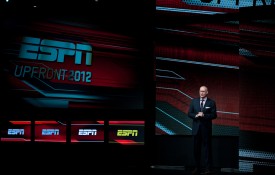Nearly 10 years after taking Kilroy Realty Corporation public, CEO John Kilroy recalls having a pivotal conversation with his senior employees while at a San Diego real estate conference. The country was in the midst of an economic recession—with the realty industry being hit especially hard—and the forecast for the future was a looming sense that the situation would continue to deteriorate. The year was 2008.
Kilroy gathered his team together and told them, “This is going to be one of the greatest opportunity periods for Kilroy Realty ever and we need to prepare for it.” Turns out he was right.
“I came away enthused at a period that was the absolute depths,” recalls Kilroy. By selling off non-strategic assets and acquiring and developing with an opportunistic edge, the company weathered the storm. With developments previously concentrated in Southern California, Kilroy branched out to two areas where he saw great potential: San Francisco and Seattle. By 2010, the geographic expansion and the changing scale of the company were already having a positive effect on the Kilroy Realty Corp. balance sheet.
It’s that eternal sense of optimism and being ready to face challenges when adversity strikes – coupled with a dogged determination and forward-thinking philosophy – that has elevated the 67-year-old realty mogul’s game and positioned him as one of the region’s most successful real estate professionals.
A 2015 winner of EY’s Entrepreneur of the Year award, Kilroy has taken the business his father founded in 1947, Kilroy Industries, and revolutionized it by anticipating trends while deftly adapting to the existing environment. One example is the company’s integration of LEED (Leadership in Energy and Environmental Design) certification standards into its business model. In 2010, “six percent of our portfolio was LEED certified,” he explains. “Today, we are the Number 1 company across all the different types of real estate in North America two years running and Number 5 in the world. Everything we do is gold and platinum.” To ensure that this statement is not construed as hyperbole, he repeats, “Everything.”
Here, There, and Hollywood
In addition to venturing outside Southern California, Kilroy sharpened his focus in the region, looking for opportunities that offered promising investment prospects. In talking with technology companies in the Bay Area and south, he realized that the demand for content, much of which originates in Hollywood, was higher than ever. Smartphones, for example, have opened an expansive avenue for delivery of entertainment content. “Hollywood is becoming a major hub and we recognized that earlier than anyone else,” he says.
The advent of new technologies has created what Kilroy calls a virtuous cycle for the area. “Smart people, technology, entertainment, and the other things that go on in Los Angeles are creating an environment where we’re drawing in more and more Millennials,” he says. “And we’re creating jobs for them in high-paying industries that pay lots of taxes, which are good for the overall economy.”
“Never get complacent. Don’t ever think something can’t be done.”
Contemporary corporate culture has given rise to a new breed of workforce that is more empowered than ever before, according to Kilroy. No longer does the physically imposing, cold granite building representing the all-powerful corporation hold sway over employees. Meritocracies are commonplace. Physical barriers that once distinguished the professional environment have been taken down in the name of open collaboration. And it has become standard practice for companies to promote a more relaxed atmosphere via ping-pong tables, comfortable alternative seating, and catered lunches.
The mixed-use workplace represents the new direction of the company. “We’ve gone away from doing one-off buildings,” Kilroy states. Columbia Square, an ambitious project at the corner of Sunset Boulevard and Gower Street to be completed this spring (see pg. 53), is a shining example of this philosophy. The 4.7-acre mixed-use development includes luxury residential, retail, creative office, studio and media facilities, as well as historical reuse. It’s also just a block away from LA Metro’s Red Line, allowing for a more seamless connection between home, work, and the rest of the city. It’s all part of the ongoing trend away from the personal automobile and toward public transportation. “I know that sounds weird for LA, but it’s happening,” he says.

Father and son Liam are both world-class sailors
Kilroy Was Here
Kilroy’s father, John Sr., was a 19-year-old assistant chief inspector at Douglas Aircraft Company when the U.S. became involved in World War II. “My father wrote a paper on the correlation between the rate of rejection and the workplace environment, [pointing out] simple things like good lighting, ventilation, picking up stuff and having it organized and what not,” recalls Kilroy. This paper landed on the desk of company founder Don Douglas, Sr. “He asked to speak to this Kilroy guy and in walks this skinny, six-foot-three, 19-year-old kid.” It was the beginning of a lifelong friendship.
After the war ended, Kilroy, Sr. realized that many big corporations that had been dedicated to the war effort were going to need facilities if they were going to stay in California. So he became a real estate broker and formed Kilroy Industries, cobbling together various connections to invest in constructing industrial buildings. “He always had the theme that you’ve got to follow technology because that’s the future,” recalls Kilroy. “So I grew up in that kind of household where it was always a discussion about the fact that the future would hold a lot of changes and you’ve got to be adaptable. That’s a very common theme now with schools because they think kids are going to have multiple jobs [throughout their careers] but that was not such a common theme when I was a kid.”
Kilroy is upfront about his father’s positive traits and influence early in his life (“a brilliant guy, terrific in math, great salesman, taught me a lot about character”), but their relationship is fractured and the two have not spoken in the past few years.
“I worked with him much longer than I should have,” Kilroy acknowledges. While it was never his goal to join the family business, Kilroy’s work ethic was shaped by aspects of his father’s business since the age of 10. He swept warehouses, worked as a watchman at a building owned by Kilroy Industries during high school and cleaned the bottoms of boats in shipyards after high school.
While in college, Kilroy realized he had higher ambitions. He was contemplating a career in corporate law, so he began working with his dad in the office and learned a lot about the business. That same year, he did his first million-dollar deal. “In today’s terms it would probably be a $30 or $40 million deal.” From that point on, he was hooked on real estate.
Kilroy, Sr. remained non-executive chairman of the business until stepping down in 2013, but it was his son who drove the decision to go public, evolving the company into Kilroy Realty Corporation, shifting the scope of priorities and rolling in Kilroy Industries as a part of the larger entity.
The IPO was based on Kilroy’s desire to have “a company that was more diversified geographically [and] product-wise, more diversified and capable from an overall management standpoint and [with] a much more conservative balance sheet and the kinds of discipline that are really important to have in creating a world-class entity.” He looks back on this period as his biggest professional challenge.
“I recognize that if you’re going to attract really great people, most great people are not just about money. Money’s important, but they’re about wanting to be part of something that is big, that hopefully is fun and, culturally, that they’re in an environment that they really like and appreciate.”
Smooth Sailing Ahead
Weathering the transition from private to public company plays into a couple of the Southern California native’s guiding principles. “Never get complacent. Don’t ever think something can’t be done,” he says, adding, “because when you do, you’re going to miss opportunities.”
It’s no coincidence that some of Kilroy’s comments sound as if they were ripped from the motivational playbook of a competitor in the sporting world. In fact, he’s a world-class sailor, having won nine world championships with his sailing team while setting records in some of the world’s great ocean races.
“I’ve sailed with some of the best people in the world,” he says, “and what you realize is that character traits really transcend everything. [Things like] being part of a team, being calm when it’s required, working hard, listening to others, critically evaluating your performance … but more than anything, I love competition.
“Sailing is Chutes and Ladders,” he continues. “You want the ladders to be as long as possible and the chutes to be as short as possible, but you’re constantly having to make adjustments. It makes you very aware in the ‘now,’ as well as planning for what’s coming around the corner.”
While Kilroy’s nautical accomplishments are undoubtedly impressive, his 12-year-old son Liam is already poised to surpass him. “He started at 10,” says Kilroy. “By the time he was 11, he was beating me 40 percent of the time. Now we’re neck in neck.” The family has six sailboats docked around the world to keep up with their exploits – two each in San Francisco, Florida, and Europe. “He is doing something that no one has ever done at his age at this level,” Kilroy enthuses. “He’s competing against Olympians and world-class sailors [and] he’s become one of the best sailors in one of the most competitive classes in the world. He’s in the sixth grade and he’s kicking everybody’s tail!”
In early March, at the helm of his sailboat Wildman, Liam Kilroy and his team won the overall 2015/16 Miami Winter Series title. Among those that succumbed to Wildman? His father’s Samba Pa Ti.
Like many high-achieving leaders, Kilroy finds a strong correlation between business and physical activity. “Some of my best thinking is when I’m doing sport, because I’m not thinking about business consciously, but my subconscious is coming up with amazing ideas that otherwise I found unsolvable.”

Kilroy speaking at the Ernst & Young Entrepreneur of the Year Awards in 2015
Connecting the Dots
Kilroy is proud of the executive team he has built over the years, many of whom have been with the company for more than three decades. COO Jeffrey C. Hawken started as an intern when he was 17. “One of the things I’m most proud about is I really believe in mentoring people and giving them the runway to become all they can be,” he says.
“I tell young people when we hire them today, ‘You should want my job. And I will help you in every way I can to make you as good as you possibly can be,’” says Kilroy. “I recognize that if you’re going to attract really great people, most great people are not just about money. Money’s important, but they’re about wanting to be part of something that is big, that hopefully is fun and, culturally, that they’re in an environment that they really like and appreciate.”
Kilroy made the tactical decision to move to Northern California in 2014, but his company is still headquartered in Los Angeles and he remains committed to solving the problems the area faces as they relate to transportation and accommodating the population. Asked about the “Stop Manhattanwood” billboard campaign that is opposed to increased development in Hollywood, Kilroy is unapologetic while pointing out the underlying issues at hand.
“[Los Angeles has] a massive shortage of both housing and affordable housing,” Kilroy points out. “Anti-development means more homelessness, longer commutes, [and] more stress on the transportation system, degrading the air much further. You cannot be a world-class city without a world-class transportation system. And we don’t have it.” Kilroy mentions some notable exceptions – the Red Line from Hollywood into all the other entertainment centers and the new Expo Line to Santa Monica – but there is much work to be done and decrying development that is intended to either centralize or connect communities is misdirected.
Whether the focus is real estate or navigating the high seas, Kilroy prefers to dwell on what is possible. “I hate it when people say, ‘You can’t do that.’ Because who knows? Maybe you can.”














































